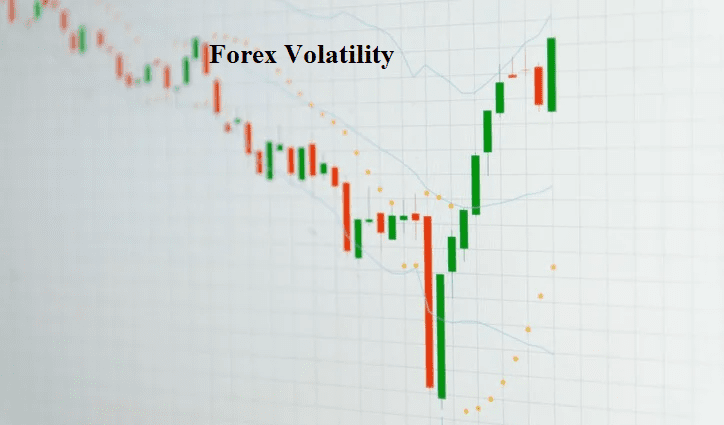Forex Trading Strategies for High-Frequency Trading (HFT): Navigating Approaches for Executing a Large Number of Rapid Trades
High-Frequency Trading (HFT) has become a pivotal force in the modern forex market. This article delves into the realm of forex trading strategies tailored for HFT. It explores the significance of HFT, introduces various approaches to executing rapid trades, and provides insights into risk management and technological prerequisites. By understanding the intricacies of HFT strategies, traders can make informed decisions to thrive in this dynamic and competitive arena.

Table Content
1. Introduction
2. Understanding High-Frequency Trading (HFT)
3. Approaches for HFT in Forex Trading
4. Risk Management in HFT
5. Technological Prerequisites for HFT
6. FAQs:
7. Footnote
Introduction:
In the rapidly evolving world of forex trading, speed is often the name of the game. High-Frequency Trading (HFT) has emerged as a dominant force in this landscape, where traders execute a large number of rapid trades within milliseconds. HFT leverages cutting-edge technology and sophisticated algorithms to capitalize on market inefficiencies and price differentials that exist for only fleeting moments. This article delves into the realm of forex trading strategies tailored for HFT, exploring the approaches that allow traders to navigate the complexities of executing rapid trades successfully.
Understanding High-Frequency Trading (HFT):
High-Frequency Trading is characterized by its lightning-fast execution of trades, enabled by powerful computers, advanced algorithms, and high-speed data connections. This section sheds light on the essence of HFT and its significance in the forex market.
Approaches for HFT in Forex Trading:
In the world of HFT, various strategies are employed to execute rapid trades. This section highlights some prominent approaches used by HFT traders:
a. Market Making: Market makers continuously quote both buy and sell prices, profiting from the bid-ask spread. Their goal is to profit from the volume of trades rather than relying on significant price movements. This strategy requires precision in quoting prices and rapid order execution.
b. Statistical Arbitrage: Statistical arbitrage involves identifying patterns of price movements and correlations between currency pairs. Traders look for deviations from historical norms and execute trades when a discrepancy arises. This strategy requires sophisticated statistical models and real-time data analysis.
c. News-Based Trading: Traders employing this approach capitalize on the immediate market reactions to news events. Automated algorithms scan news sources and execute trades based on predefined criteria once a significant announcement is made. This strategy demands rapid information processing and execution.

d. Scalping: Scalping involves making a large number of small trades throughout the day to capture minor price movements. Traders enter and exit positions swiftly, aiming to accumulate small profits that add up over time. This strategy requires a keen understanding of short-term market dynamics.

Risk Management in HFT:
While HFT can be highly profitable, it's not without risks. This section addresses the importance of risk management strategies in HFT:
a. Volatility Management: HFT traders need to be cautious during times of heightened market volatility, as rapid price fluctuations can lead to unexpected losses. Implementing volatility filters and position limits is crucial to avoid excessive risk exposure.

b. Technology Risks: HFT heavily relies on technology, making it susceptible to technical glitches, connectivity issues, and cyber threats. Traders must have robust backup systems and security measures to mitigate these risks.
c. Regulatory Considerations: HFT strategies are subject to regulatory scrutiny in many jurisdictions. Traders must ensure compliance with relevant regulations and stay updated on any changes that might affect their trading activities.
Technological Prerequisites for HFT:
Executing successful HFT strategies necessitates a technologically advanced infrastructure. This section outlines the key technological prerequisites:
a. Low-Latency Connectivity: HFT thrives on speed. Traders require direct market access (DMA) and low-latency connections to trading servers to minimize execution delays.
b. High-Performance Computing: Powerful computing systems are essential for processing vast amounts of data and executing complex algorithms in real-time.
c. Co-location Services: Co-locating trading servers in close proximity to exchange servers reduces communication delays and enhances execution speed.
FAQs:
Q1. Is HFT suitable for individual retail traders?
A: HFT is primarily dominated by institutional players due to the significant technological and financial resources required. Retail traders might find it challenging to compete effectively in this space.
Q2. How much capital is needed for HFT?
A: The capital requirements for HFT can vary significantly based on the strategies employed and the markets traded. Generally, substantial capital is necessary to cover technology expenses and withstand potential losses.
Q3. What role do algorithms play in HFT?
A: Algorithms are the backbone of HFT strategies. They analyze market data, identify trading opportunities, and execute trades at lightning speed based on predefined rules.
Q4. What markets are suitable for HFT?
A: HFT strategies are commonly employed in forex, equities, and futures markets. The forex market's high liquidity and 24/5 trading hours make it particularly attractive for HFT.
Q5. How can risk be managed in HFT?
A: Effective risk management in HFT involves implementing volatility controls, employing robust technology with backup systems, and staying compliant with relevant regulations.
Footnote:
High-Frequency Trading is a dynamic and lucrative arena within the forex market. Traders leveraging HFT strategies must be equipped with cutting-edge technology, sophisticated algorithms, and a keen understanding of market dynamics. By embracing the approaches discussed in this article and implementing robust risk management practices, traders can navigate the challenges and capitalize on the opportunities presented by HFT, contributing to their success in this fast-paced trading environment.











Discussion